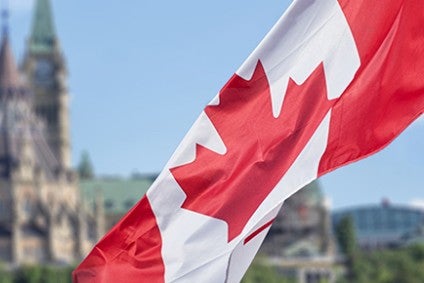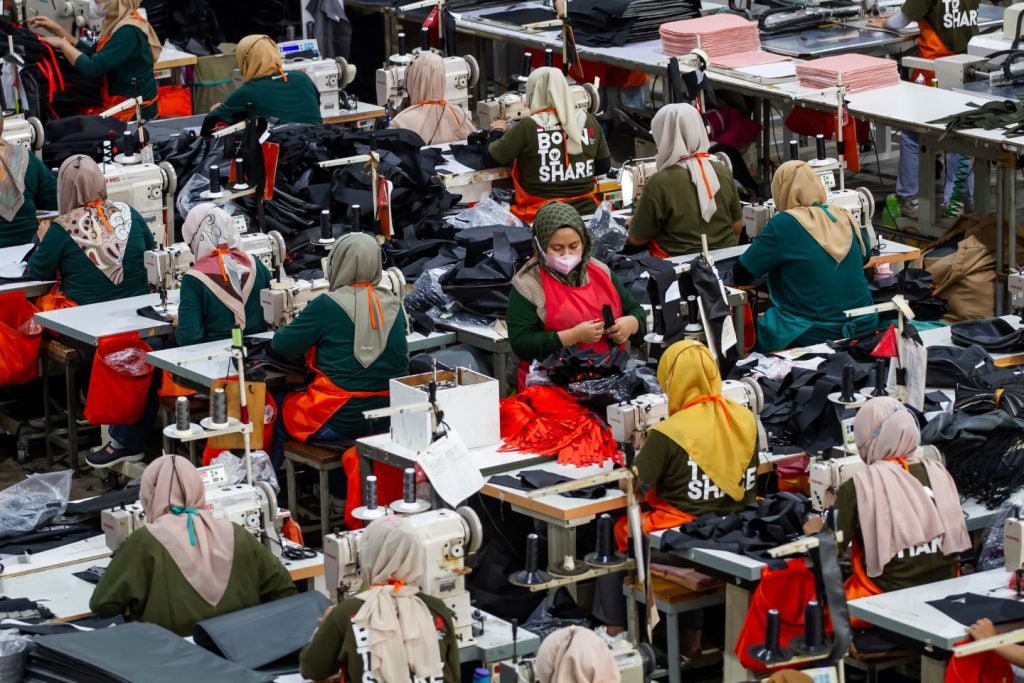
Canada is the world’s fifth-largest apparel market, and one of its fastest growing importers. Here Dr Sheng Lu, associate professor in the Department of Fashion and Apparel Studies at the University of Delaware, rounds up the country’s key sourcing patterns.
#1: Canada is one of the largest and fastest growing apparel import markets in the world. UN Comtrade data shows the value of Canada’s apparel imports totalled $10.7bn in 2017, ranking it fifth in the world after the European Union (EU), the United States, Japan and Hong Kong. Notably, between 2010 and 2017, Canada’s apparel imports saw a 3% compound annual growth rate, higher than the EU (2%), Japan (1%) and the US (1%). Thanks to robust economic growth, Canada’s apparel imports rose by 5.3% in 2017, compared with an increase of only 2.8% in the rest of the world.
#2: The Asian region as a whole is the dominant supplier of apparel to Canada, although the sourcing base is gradually diversifying. Measured in value, as much as 80.9% of Canada’s apparel imports in 2017 came from Asia. Specifically, China (40.6%), Bangladesh (11.1%), Cambodia (8.1%) and Vietnam (7.7%) were the top individual suppliers. It is also interesting to note that the Herfindahl Index (HHI), a commonly adopted measure of market concentration, declined from 0.3 in 2010 to 0.19 in 2017, meaning that overall the Canadian apparel import market is becoming less concentrated. For example, echoing trends in the US, over the past ten years Canadian apparel companies have been sourcing less from China (53% in 2007 compared with 40.6% in 2017) – and shifting their sourcing orders to other Asian countries, particularly Vietnam, Cambodia and Bangladesh.
How well do you really know your competitors?
Access the most comprehensive Company Profiles on the market, powered by GlobalData. Save hours of research. Gain competitive edge.

Thank you!
Your download email will arrive shortly
Not ready to buy yet? Download a free sample
We are confident about the unique quality of our Company Profiles. However, we want you to make the most beneficial decision for your business, so we offer a free sample that you can download by submitting the below form
By GlobalData#3: The NAFTA region is an important apparel sourcing base for Canada, but its overall influence is in decline. Measured in value, the US and Mexico were the 6th and 9th top apparel suppliers to Canada, respectively, in 2017. However, facing competition from Asia, the two combined accounted for only 6.4% of Canada’s apparel imports, a significant drop from 9.8% back in 2007. The North American Free Trade Agreement (NAFTA) has played a critical role in supporting Canada’s apparel sourcing from the US and Mexico. For example, a special provision called the tariff preference level (TPL) under NAFTA allows the US and Mexico to export a certain amount of apparel to Canada duty-free despite using non-NAFTA originating textile inputs. Notably, the TPL fulfilment rate for US cotton or man-made fibre apparel exports to Canada has always reached 100%, suggesting the high popularity of the programme.
An analysis of the TPL mechanism in the new United States-Mexico-Canada Agreement (USMCA) shows that compared with NAFTA, the new pact will cut the TPL level, but only to those product categories with a low TPL utilisation rate. It will also expand the TPL level for a few product categories with a high TPL utilisation rate.
#4: Free trade agreements and trade preference programmes provide duty-saving opportunities for apparel sourcing in Canada. In 2017, Canada applied an average tariff rate of 17.1% on imports of knitted apparel (HS Chapter 61) and 15.9% on woven apparel (HS chapter 62). The maximum import tariff rates for knitted apparel and woven apparel were both 18%. Despite the relatively high tariff rates, as of August 2018, Canada has 17 free trade agreements (FTAs) and trade preference programs (TPAs) in force, offering preferential or duty-free market access to Canada. Traditionally, a substantial portion of Canada’s FTA partners come from the Western Hemisphere, such as Chile, Costa Rica, Colombia, Peru, Honduras and Panama. However, in recent years, Canada has been actively negotiating and reaching new FTAs with countries in Asia (such as South Korea, India and Japan) and Europe (including the European Union and Ukraine).
Compared with the United States, Canada generally adopts more liberal rules of origin (RoO) for apparel products. For example, while almost all US FTAs require the strict “yarn-forward” rules of origin, quite a few Canada FTAs allow companies to source yarns or even fabrics from anywhere in the world – with the finished products still enjoying duty-free treatment when exported to Canada.
Meanwhile, apparel exports from qualified least developed countries (LDCs) to Canada can enjoy duty-free benefits through the Canadian Least Developed Country Tariff (LDCT) programme. As a reflection of its impact, data shows that roughly 20% of Canada’s apparel imports in value in 2017 came from LDCs (including the 2nd top supplier Bangladesh and 3rd top supplier Cambodia), which strongly supports the economic growth of these LDCs as well as helping importers to reduce sourcing costs. A full list of Canada’s effective FTAs and trade preference programmes and their detailed rules of origin at the 6-digit HS code level can be found in the re:source by just-style sourcing tool.
Looking ahead, and the implementation of several newly-reached FTAs – including the EU-Canada Free Trade Agreement (ECFTA), which provisionally entered into force in September 2017, and the Comprehensive and Progressive Agreement for Trans-Pacific Partnership (CPTPP) signed in March 2018 – means the apparel sourcing picture in Canada will continue to evolve.
Leading apparel exporting countries that are also members of these FTAs in particular, such as Vietnam and EU members, may likely play a bigger role as apparel sourcing bases for Canada in the future.
Click on the following link for a closer look at the apparel-specific rules of origin in the United States-Mexico-Canada Agreement (USMCA): New NAFTA 2.0 – The devil is in the detail.








